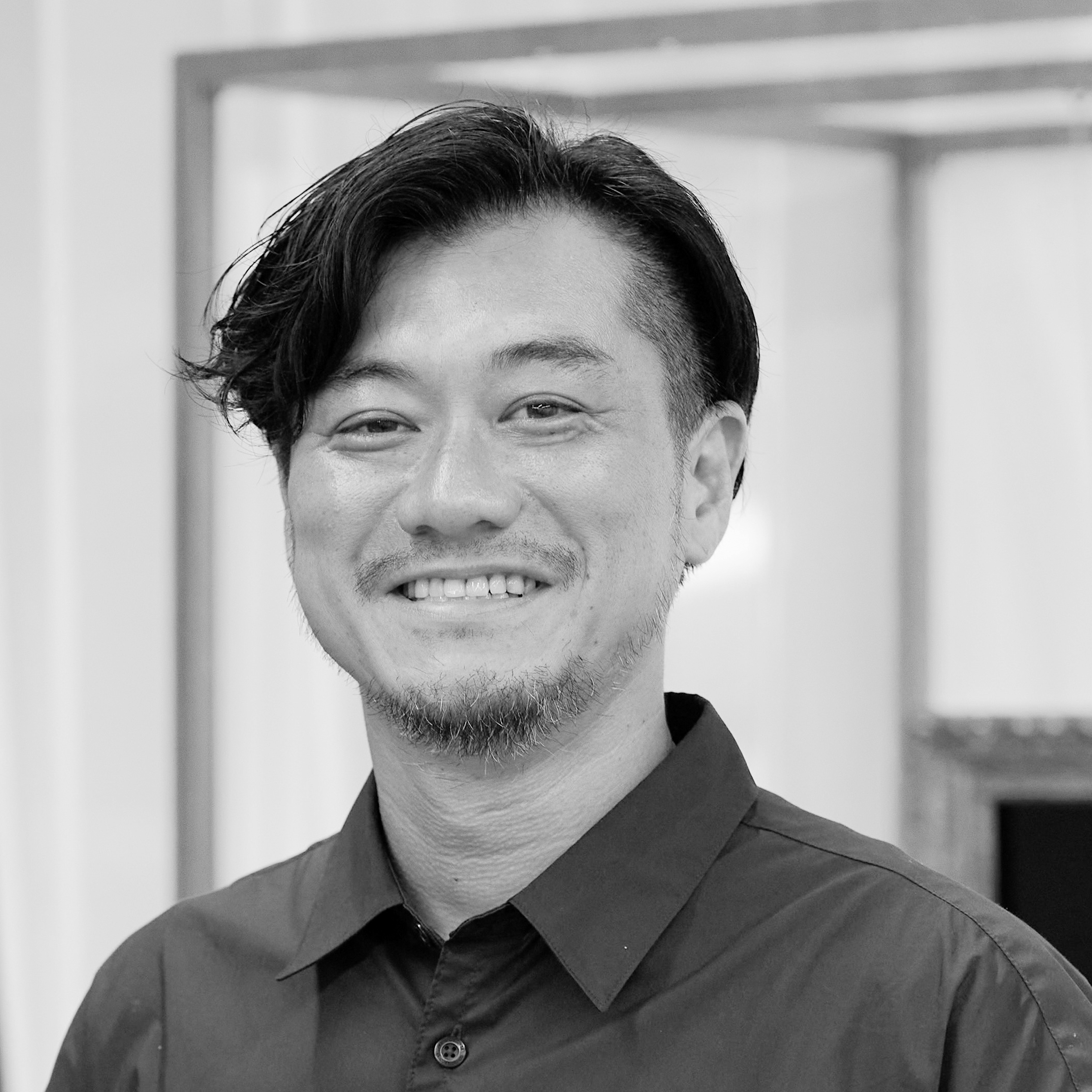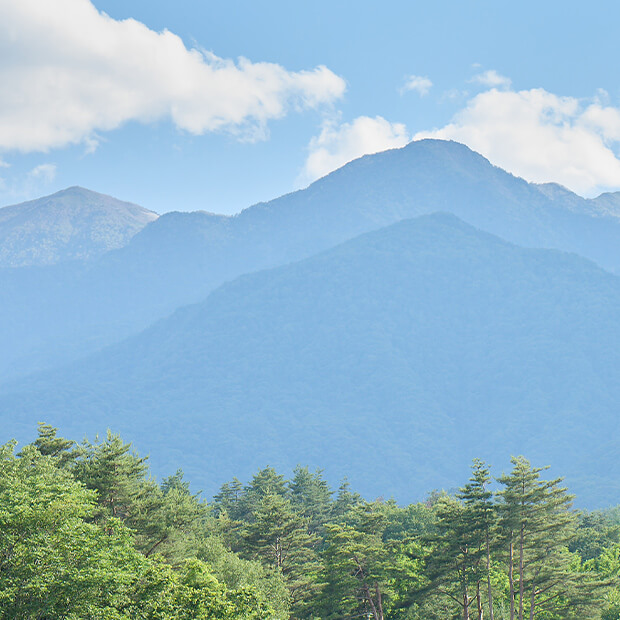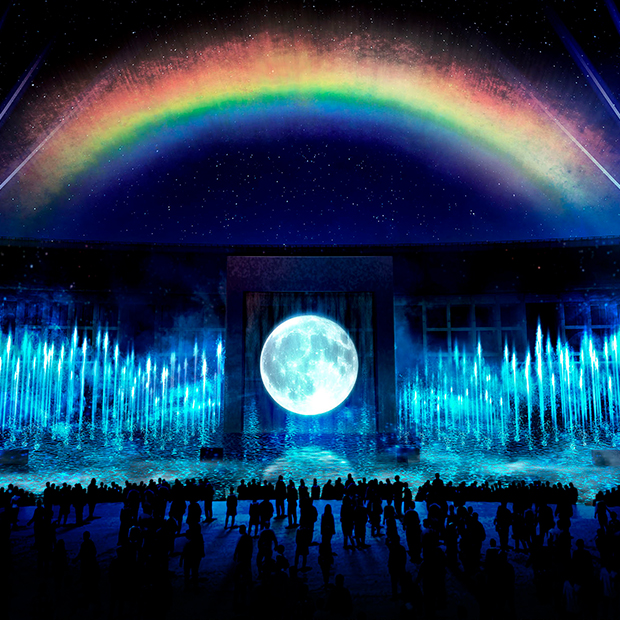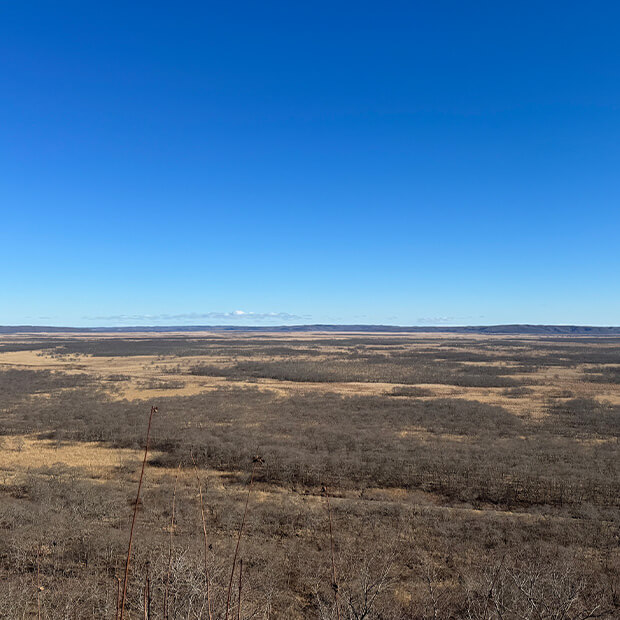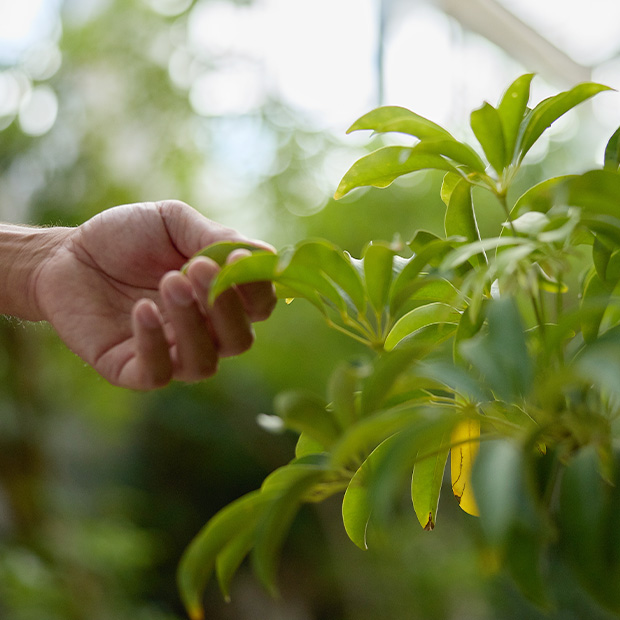The Osaka, Kansai Expo will be held in 2025, and a spectacular show titled “Under the Midnight Rainbow” can be seen at the Water Plaza, a symbolic area of the Expo. Naoki Tanaka, who has worked on numerous projects as a creative director, was responsible for this spectacular entertainment theme of “Water and Air.” Reflecting on a project that has spanned several years now, he talked to us about the challenges of expressing “Air.”
What Should Be Exhibited in an Era of Abundance?
For this project, we worked as a team in a workshop fashion, thrashing out ideas with our sponsors Daikin and Suntory. One topic that often popped up was the previous Osaka Expo, which was held in 1970. Even now, many people have vivid memories of that time. The theme of the 1970 Expo was “Progress and Harmony for Mankind," which presented us with a vision for the future evolution of the world, but I had to ask myself, "What is the point of hosting a world exposition in modern Japan with its material abundance and economic affluence?"
The first World’s Fair was held in Paris in 1855. Obviously, there was no internet at the time, and it was a time when traveling was difficult. Nevertheless, the World’s Fair was an opportunity for humanity to advance forward through the sharing of information and culture. However, the Expo no longer serves that same purpose. So, instead of deciding from the outset that we would create a water show, we revisited the meaning of the Expo and decided to do something closer to entertainment.

In an era where people can easily gather information, an exhibit becomes meaningless if it does not inspire many people to move toward a new awareness. From the very beginning, we knew that “Water” and “Air,” which succinctly epitomize the two companies, could absolutely be integrated into a new realization.
Water and Air Have Traveled the Earth through the Ages
What first came to mind for me was the realization that water and air have existed and circulated the earth since the birth of our planet. If we were to travel back 4.6 billion years, air would naturally have a different composition than it does today, and strictly speaking, it would be a different thing, but it has been circulating through repeated respiration and photosynthesis ever since the birth of living creatures and plants. Water also evaporates and becomes the atmosphere, which then forms clouds and becomes rain, flows through the mountains, and makes its way back into the rivers. So, when you think of these substances like this, it gives birth to a kind of fantasy or romantic idea: that these substances could be our elders who have been watching over the earth for a long time.
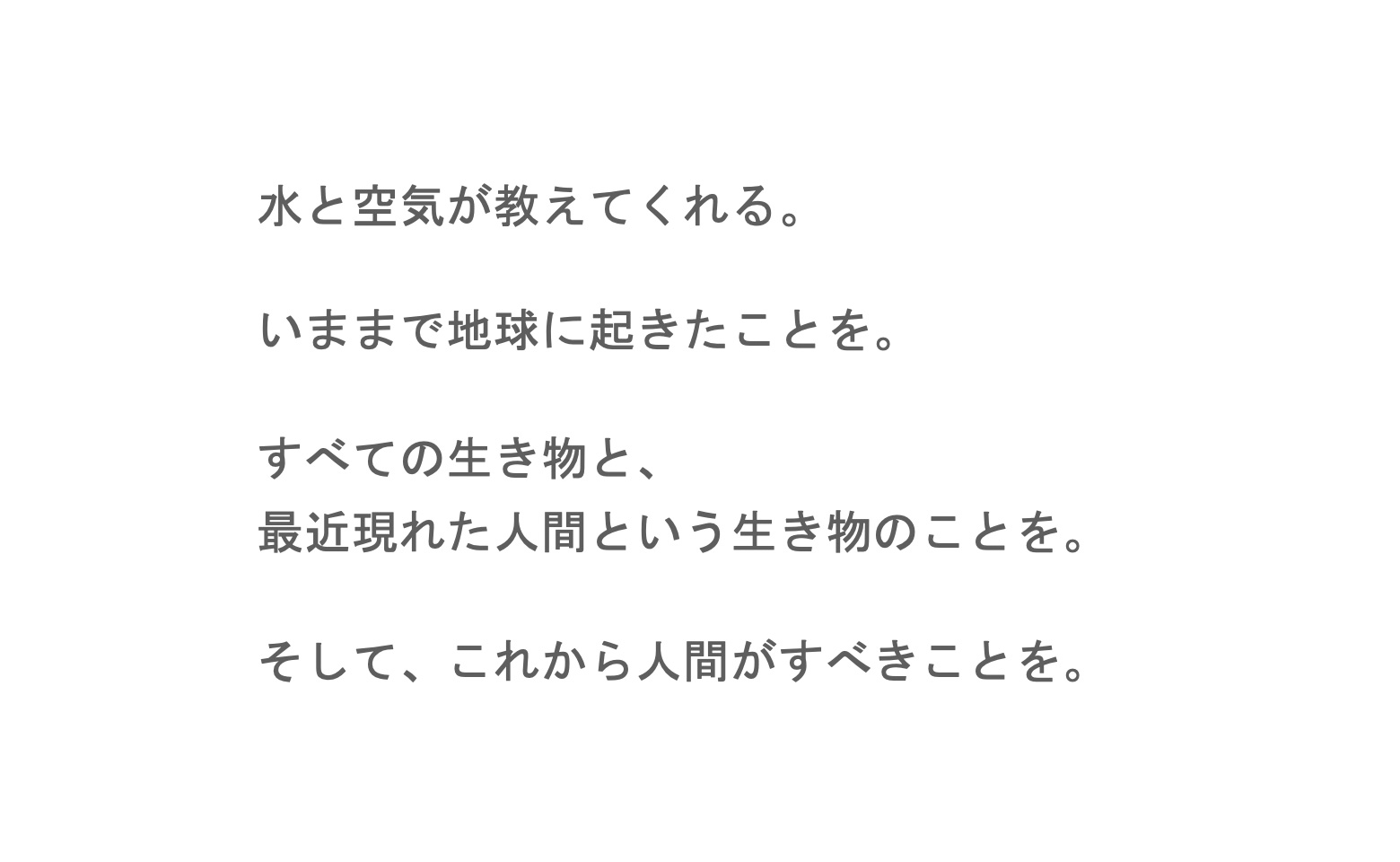
Both water and air have existed since ancient times to connect people around the world as resources shared by humanity. Simply put, they treat all people equally and show no bias. This concept runs in direct opposition to conflicts, possessions, and discrimination and is something that humanity should emulate. In expanding on this interpretation of water and air, I would say that I wanted to create something to help people understand the importance of water and air in the simplest possible terms to change future behavior and have people think of the earth.
Unfortunately, because they are so ubiquitous, water and air, as substances, can easily slip from our daily awareness. So, at a time when so many people are gathered from around the world, I thought that it would be important to take on the difficult task of fostering awareness for this fundamental aspect of our lives. To this end, Daikin has taught me a lot about air. Take air conditioners, for example. The conversation is not just about temperature. Even small changes in humidity can change how comfortable you feel and have an enormous impact on your mental health. Emotionally troubled people can often sleep better with subtle changes in air, so I really believe in the possibilities of air.
Reflecting on the Past Becomes a Futuristic Perspective
Many strange creatures inhabit the work of this show. Some of them are extinct and no longer exist in this world while many others exist as ghosts and spirits. These otherworldly beings have creatively functioned as a sort of education within the backdrop of Japanese animism. For example, we often frighten children with scary stories to teach them concepts such as taking care of the things that we use and not going out at night. In the same fashion, because these creatures are no longer in this world, I was hoping to arouse a different set of feelings than usual and convey something through that.
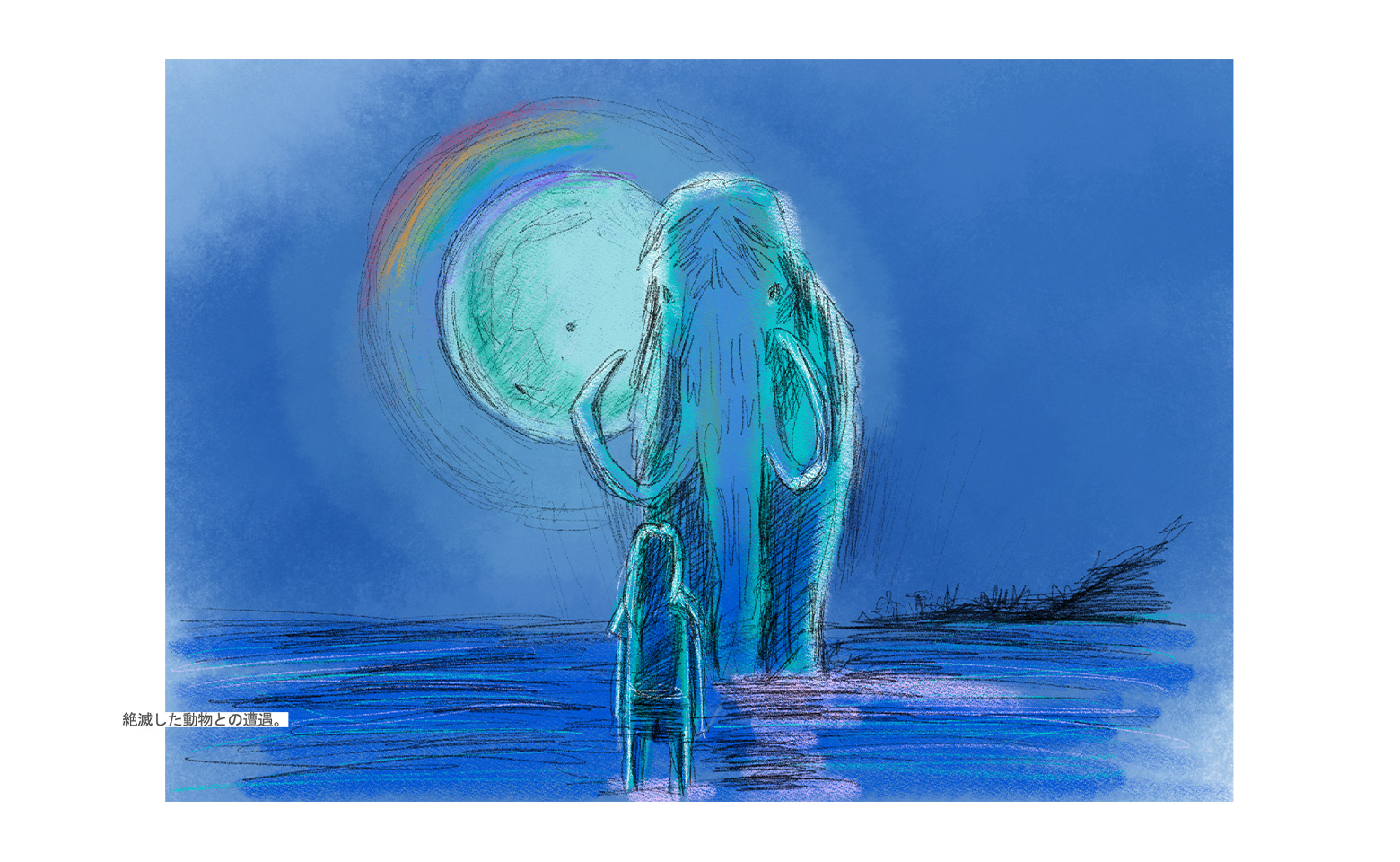
Similarly, many cultures around the world have customs in which their ancestors return from the spiritual world to interact with the living, such as Obon in Japan and the Day of the Dead in Mexico. For those of us residing in the physical world, mourning and remembering the dead helps us to appreciate life and move forward in our lives. This made me think that it would be strange to ignore the many creatures besides humans who have lived on Earth and how interesting it would be to have a global festival like Obon that incorporates the fun of encountering creatures never seen before.
For many years, I’ve admired the work of Taro Okamoto. Just like the Tower of the Sun, the symbol of the last Osaka Expo, I believe that the act of looking at living creatures who have existed until now to actually be futuristic, even though it may seem as if you are only looking at the past. The importance of life and the fundamental greatness of nature can also lead to thoughts about the future, so I expanded the image of the work for this show in the same way.
Idea of "Under the Midnight Rainbow" as Turning Point
Until to this point, the discussion had largely been conceptual and centered on the significance of what we were working on at the time, which is one step just before thinking about concrete content. The next turning point, or perhaps a giant leap, was the discussion of “Under the Midnight Rainbow,” which is also the title of our show.
From the beginning, I had always wanted to have a strong, memorable symbol at the heart of the show, and I happened to come across an article at the time about a rainbow appearing at night on Ishigaki Island. The conditions for seeing a rainbow at night require air that is extremely clear and bright, an abundance of moisture, and brightly shining moonlight. This would probably be a very happy day for living things and plants. While it is an incredibly limited phenomenon that can only be seen in locations with plentiful nature, such as Hawaii, I felt that it was a perfect fit for the concept of this show.
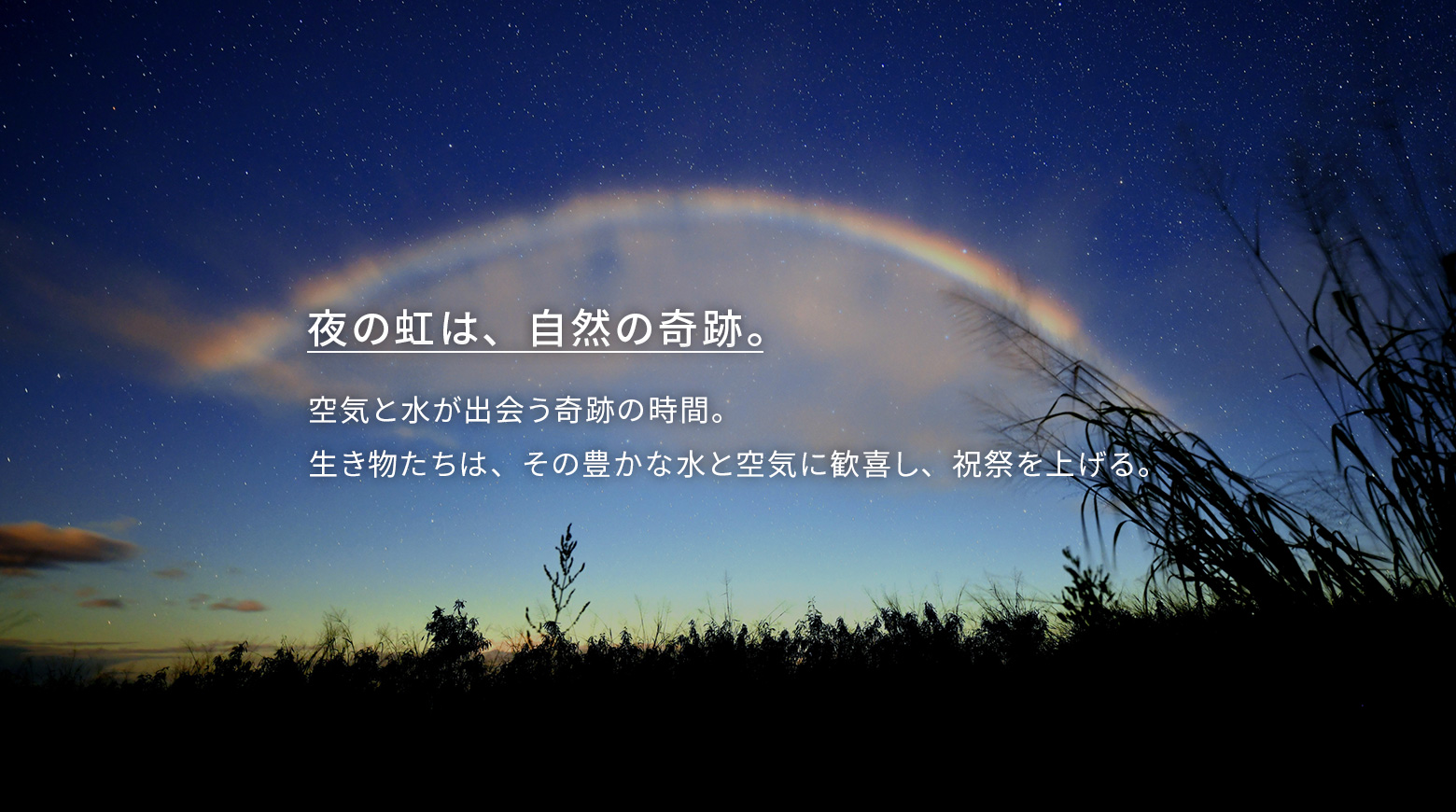
With this new knowledge, I imagined a world like the one found in the “Chōjū-giga" paintings: a world with abundant water and air and a miraculous day filled with joy for all living things, creatures from this world and beyond gather together to hold a festival. I expanded the story with the idea that we might encounter such a scene.
Expressing Air by Trial and Error
In terms of expression, rather than just depicting through video, I wanted to somehow provide air with a more realistic sensation, and fortunately my team excels at incorporating new technologies, mechanisms, and equipment. To give an easy-to-understand example, it usually can only be felt when there is an object such as cloth, so we made repeated studies and proposals on how we could convey it in a more interesting way.
However, because it is an outdoor show, the venue imposed many restrictions, which sometimes frustrated us. For example, draping a huge piece of cloth from the top to change the shape would be difficult from a safety perspective. And while soap bubbles are easy to understand, the impact that they would have on the ocean after being blown away by the wind made them unrealistic.
On the other hand, the advantage of an outdoor setting is that you can truly experience the air, winds, and smells. To enable the audience to feel the air, we turn the music and lights off in the middle of the show to create a few moments of complete silence. A variety of approaches were tried to convey the sensation.
Air as a Creative Motif
I’ve been involved in various creative projects up to now, and I think water and air are extremely fascinating themes. The reason is that when you want to touch people's hearts, you need to use some type of motif to communicate what you want to express, and water and air, which relate to all living things, are motifs that many people can relate to because they are so large in size.
In that regard, having both Daikin and Suntory choose air and water, respectively, as their themes was very significant. I think any child knows that we need to value both water and air. What is most difficult to convey is that innate knowledge that people carry in their heads, but surprisingly, they never think about. Consequently, when you tell them something they hadn't thought about before, they tend to accept it more easily. I hadn’t realized it before, but that rule is important.
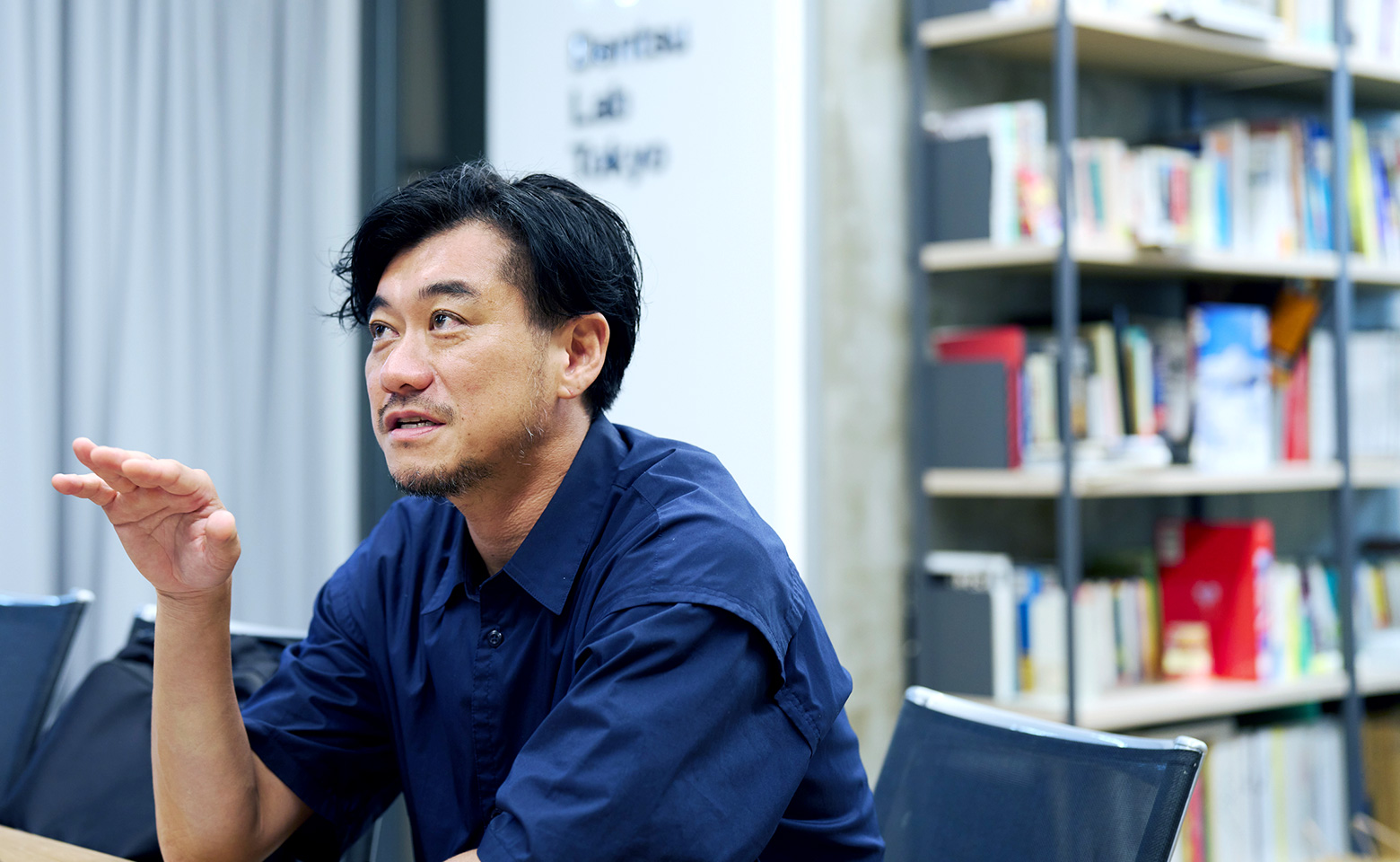
I think that all children understand intuitively that we should value water and air, but unless you’ve had some extraordinary experience, you are unlikely to consciously think about the value of these substances. Therefore, half of the story is creative, a fiction if you like, but the other half, such as water and air being things that have been circulating for a long time, is based on fact. This means that you may be drinking the same water that a Triceratops drank many millions of years ago. Conversely, people living 100 years in the future from now may breathe the same air that we are breathing now. Sadly, I think that Earth is somehow changing in a very bad direction now, and even though our water and air have existed as they are now for billions of years, I am very worried as a parent about what may happen in the future. Such personal thoughts may also be included in the concept.
Importance of Living While Imagining the Air
Typically, being aware of things that cannot be seen is difficult, but in today’s world where we determine, debate, and argue over only what we can see, I think it’s more important to think about the things like our invisible air. There’s a great deal that we can learn from air.
Finally, I think that the agenda set forth in the SDGs can be resolved by simply imagining how other people and living creatures feel. Everyone should imagine, little by little, how all life can become happy. If all of humanity, especially those living in developed countries, were to be aware of life as if they were imagining air, then there would be no more conflicts or discrimination and less trash with no more wasteful production.
So, that’s why I want to change not only the physical air, but also the mood and vibes that flow through it. By the raising awareness of people things that they haven't noticed, it will become easier for people who are struggling to live now. The situation in which people who are disadvantaged and considered weak will also improve. I've created a lot of copy and design up until now, but to encapsulate what I mean in one phrase, I would say that I want to "make society a better place."
2025 Expo Osaka, Kansai, Japan: A Spectacle of Air and Water "Under the Midnight Rainbow" Official Website
https://www.expo2025.airandwatershow.jp/
Daikin Industries’ special site for Expo 2025:
https://www.daikin.co.jp/air/activity/expo2025/






